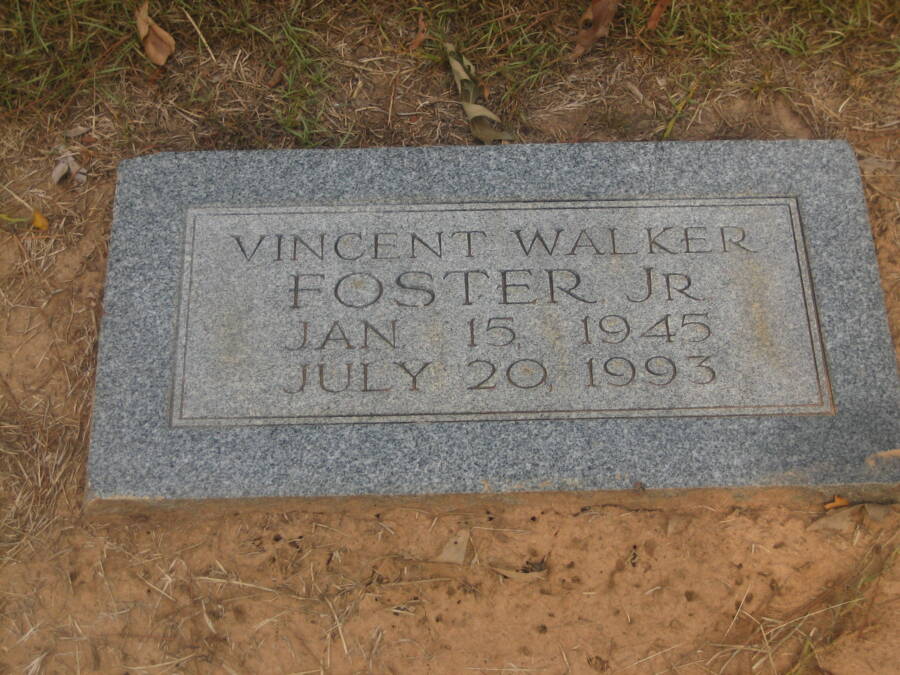
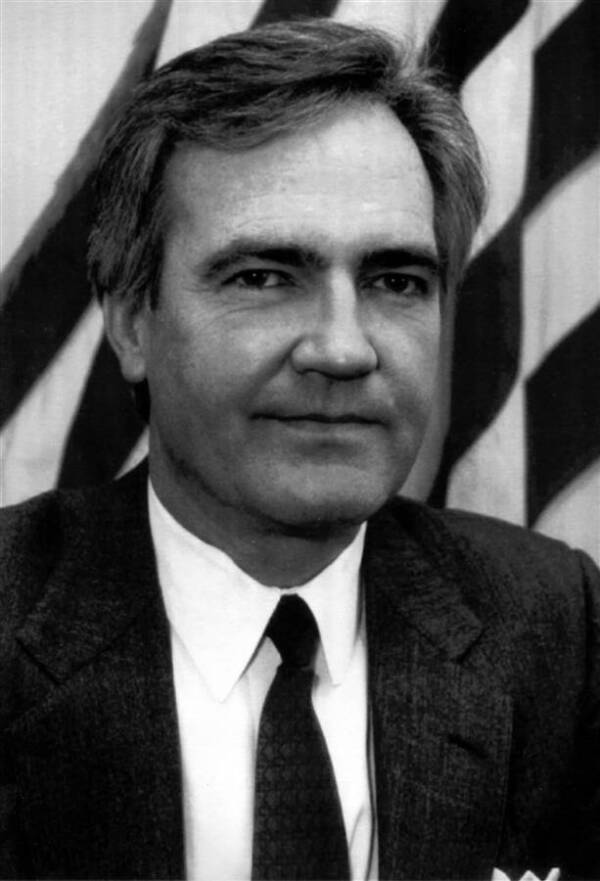
Vince Foster was the highest federal official to die since JFK. His death was ruled a suicide; however, strong evidence suggests that he was murdered.
[This article continues CAM’s inquiries into political assassinations in the U.S. and their political implications. It also continues a week of articles on the crimes of Bill and Hillary Clinton who had the audacity to advance harsh criminal justice policies when they themselves were career criminals.—Editors]
Shortly after 6 p.m. on July 20, 1993, following two 911 calls, the U.S. Park Police came upon the body of Vincent W. Foster, White House Counsel, and Bill and Hillary Clinton’s personal lawyer, who had come to Washington, D.C., after working closely with Hillary at the Rose Law Firm in Little Rock, Arkansas.
Foster’s body was found lying face up, head up on the side of a steep slope in Fort Marcy Park, an old Civil War structure in McLean Virginia—located only 8 minutes away from CIA headquarters—on a dirt path in front of an old cannon. With his head blood-stained, Foster was still clutching the .38 colt revolver he supposedly shot himself with, his thumb trapped by the trigger.

On the day of his death, Foster had left his office in the White House’s West Wing at 1 p.m. after eating lunch there. Supposedly, he jumped in his Honda, walked to a secluded corner of the park and killed himself.
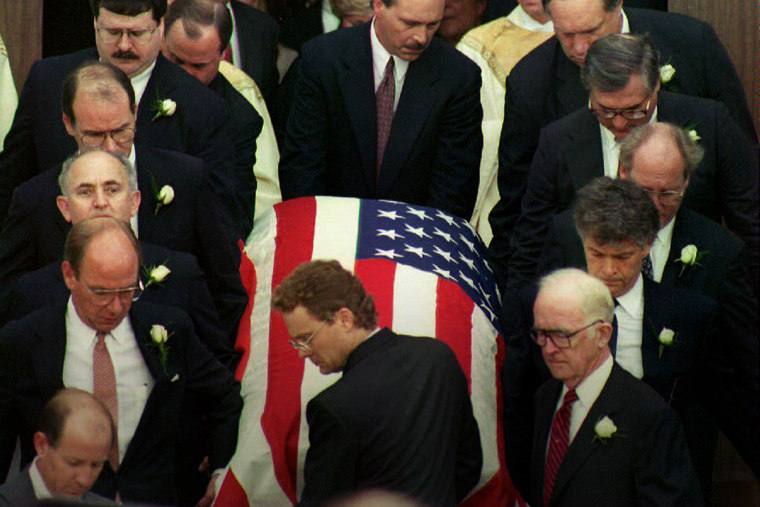
Strangely, no one had seen Foster from the moment he had left the West Wing to the time his body was discovered—even though his face had been splashed across the news.[1]
Also, no one heard the thunderous noise of a gunshot and police investigators initially did not find his car keys on him, raising questions about how he got to the park.
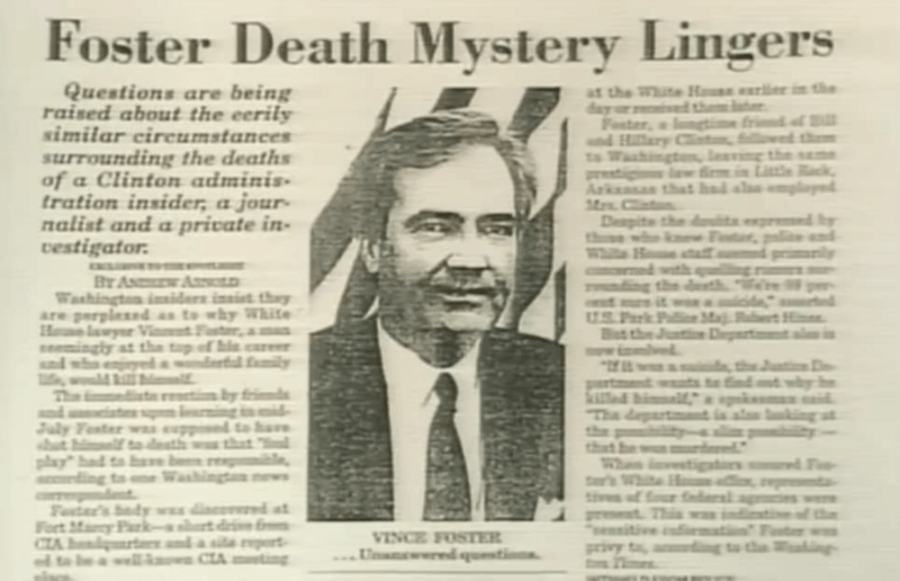
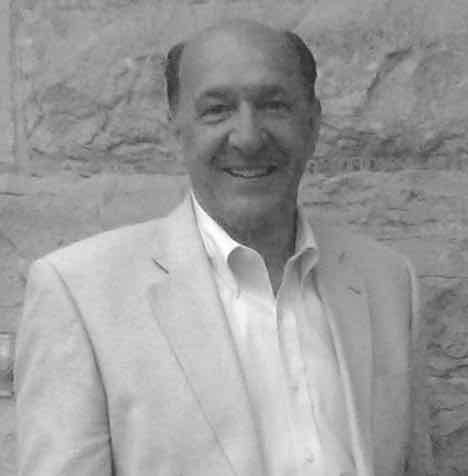
Vincent Scalice and Fred Santucci, New York City homicide detectives with 50 years combined experience who were hired by the Western Journalism Center to investigate the case, said that they had never seen a gun in a suicide placed in such an orderly manner and that under ordinary circumstances the gun was away from the person firing it—sometimes landing many feet away due to the force of the gunshot and reflexive actions of the victim.[2]
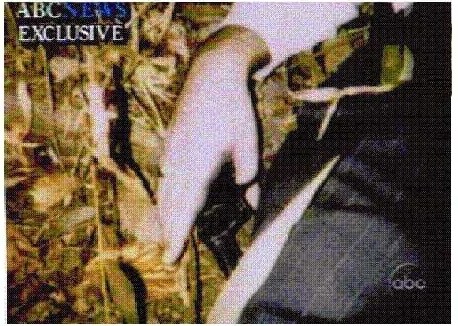
In the Foster case also, they would have expected a huge pool of blood—a mess—when only a small trickle of blood was found running from his mouth.[3]
The gun itself appeared clean—as if it had been wiped.[4]
Further Evidence that the Crime Scene Was Staged
There were several other suspicious things about Foster’s death to contradict the official story. These included:
- No soil found on Foster’s shoes despite him allegedly having walked down a dirt path. Everyone who walked down the path had soil samples on their shoes.[5]
- The bullet that killed Foster could not be located.[6]
- None of the 26 people who viewed Foster’s body before the autopsy saw entrance and exit wounds from the bullet that allegedly killed him.[7]
- No fingerprints on the gun and no gunpowder was found on Foster’s tongue. There was also no disfigurement of the mouth or chipped teeth as is usual for a gun shot through the mouth.[8]
- Foster’s family could not identify the .38 colt revolver as being his.
- Foster’s eyeglasses were found some 19 feet from his head, or 13 feet beyond his shoes, indicating the staging of the scene.[9]
- A gash on Foster’s neck and wine stain on his shirt has never been explained along with the presence of semen in his underpants.[10]
- The first witness and police officer on the scene reported that they did not find a gun in Foster’s hand, indicating that a gun may have been placed next to him afterwards.
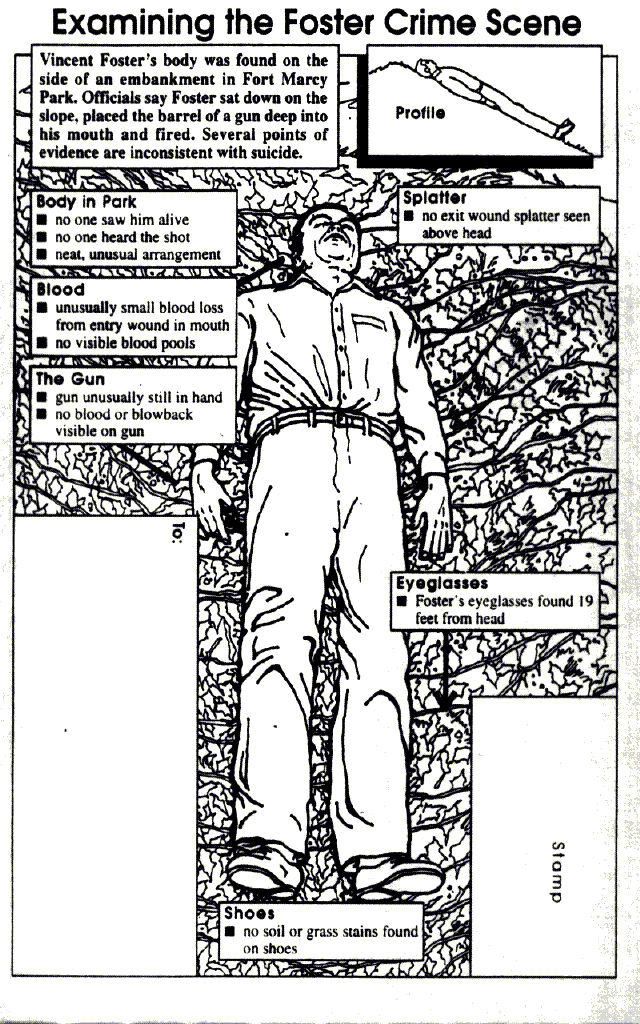
- Richard Arthur, a Fairfax paramedic, described the position of Foster’s body as coffin-like, as if the body had been placed there. He told Senate investigators that he had “just never seen a body lying so perfectly straight after shooting a bullet in[to] his head.”[11]
- Witnesses identified a brown Honda with Arkansas plates parked in the same spot that Foster’s gray Honda was later found parked in at Fort Marcy. Patrick Knowlten, a Syracuse native who had stopped in the park to relieve himself, specified that he saw the brown Honda at 4:30 p.m. An autopsy determined that Foster had died between 2 and 4 p.m. based on the time he had eaten lunch. This meant that someone else drove his car as part of the staging of the crime scene.[12]

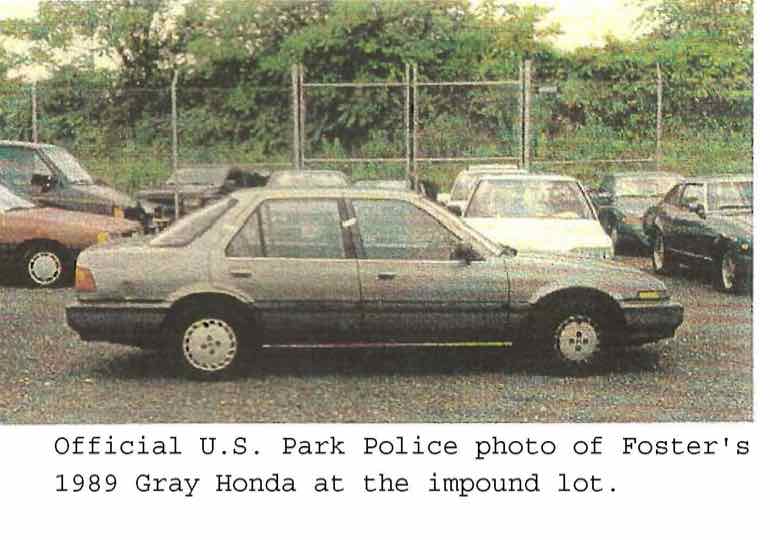
Additionally, visitors to the park reported seeing several unidentified men behaving suspiciously, including a Hispanic man sitting in the parking lot at 4:30 p.m. guarding the brown Honda shortly before the body was found.[13] Patrick Knowlton said that the man he encountered in the parking lot gave him a menacing stare.[14]
Paramedic Todd Hall, who was one of the first to come upon Foster’s body, testified he saw a man wearing a red vest running away from the death scene on the trail at the bottom of the berm.
The police claimed that the man must have been a park volunteer; however, Terry Cummings, the public relations chairman for the Potomac Appalachian Club, said park volunteers did not wear vests but whatever they wanted and usually worked on weekends or weekday mornings—not late into the evening.[15]
Confusion over Death Site
Suspiciously, the U.S. Park Police misrepresented the location of the death site in their official reports. Police said they had found the body in one place, on the berm past a cannon, but the police report noted a different spot for the press and public, in front of a second cannon.[16]

When some police polaroid shots were leaked to ABC News—supposedly affirming the claim of a suicide—the hand in the gun was surrounded by thick foliage, indicating that the body was lying in dense brush. This image was not consistent with the area in front of the second cannon, which is a dirt path with little surrounding vegetation.[17] USA Today Reporter John Hanchette, after roaming around Fort Marcy Park, came upon a site with white plastic gloves of the type used at crime scenes–around the second cannon off the dirt path. He also found splotches of blood there, indicating that this was the real crime scene, not the one shown in the polaroid photos which appeared staged.
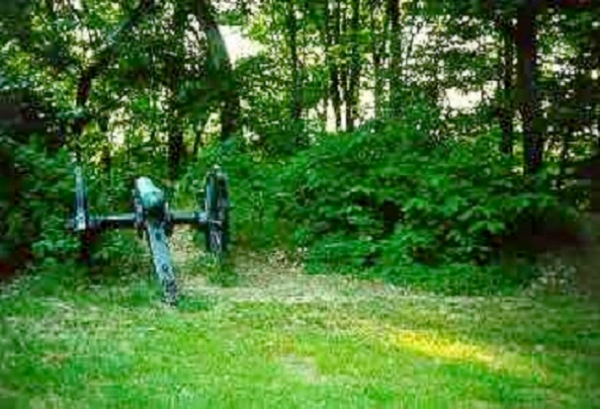
Carpet Fibers
An FBI lab found 35 definitive carpet-type fibers on Foster’s clothing: 23 were white fibers; 12 were various colors. The fibers did not originate from a single carpet.
The white fibers were consistent with carpet samples taken from Foster’s home. Others were consistent with a sample from the White House and a car—specifically consistent with Foster having been in a trunk.[18]
This forensic evidence leads to a scenario in which Foster was killed at his home or office and then transported by someone to the park in the trunk of his car—or more likely the brown Honda.
The latter would explain why there was no video recording of Foster’s departure from the White House compound.
Researcher Marinka Peschmann suggests that Foster’s body could have been snuck out of the White House rolled up in a carpet by a cleaning crew.
Clinton acknowledged she herself often snuck out of the West Wing wearing a disguise using the West Wing freight elevator where office supplies were unloaded. No guards were posted there, and the freight elevator was not tested for forensics.[19]
At the time of Foster’s death, Hillary had been supporting a White House refurbishing project—begun in late 1992—with Kaki Hockersmith, her friend from Arkansas, which had been financed through private fundraising the duo had undertaken.
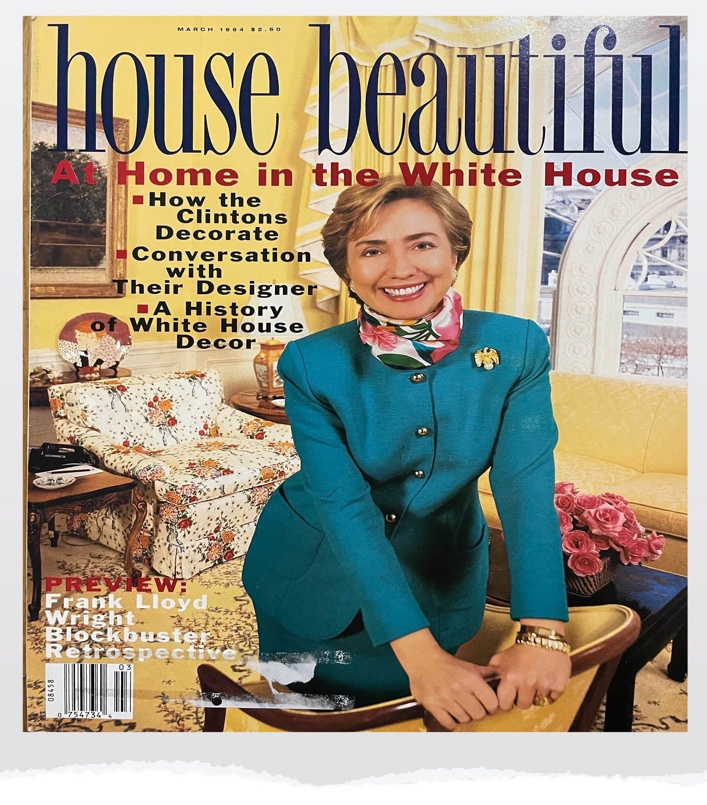
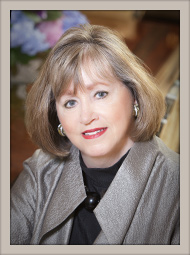
Linda Tripp, Foster’s secretary, said “they also took out Vince’s furniture. Everything was ripped out and replaced.” This meant that samples from the FBI were not from the original carpeting in Foster’s office. Furthermore, because of the refurbishing project, carpets being moved in and out could have included one with Foster’s body.[20]
Forged Suicide Note
Six days after Foster’s death, as pressure mounted for an explanation, a suicide note was suddenly discovered by Stephen Neuwirth, an associate White House Counsel at the bottom of Foster’s briefcase.[21]
This was the same briefcase that Bernard Nussbaum, senior White House Counsel and Foster’s boss, had emptied and inventoried three days earlier without discovering any notes!
Detective Peter Markland of the Park Police, upon hearing news of the note said: “Bullshit! Either it didn’t come out of the briefcase, or Nussbaum was lying that he didn’t see the note.”[22]
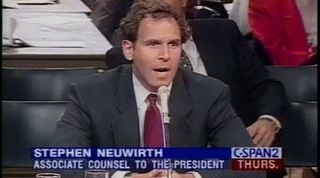
The note Neuwirth found was mutilated and fragmented into 28 pieces, 27 of which were found. The missing 28th piece was where one might have written a date or signature. The FBI lab found a smudge of palm print that was not Foster’s, but no fingerprints, suggesting that whoever tore it up was wearing gloves.
Philip Heymann, deputy attorney general in the Clinton administration, stated that while at the White House viewing the note, a number of pieces fell down on the floor and there was a scramble to pick them up. By the time it was reassembled, the fingerprints of everybody in the White House were on it.
Republican senators claimed that the whole story was suspicious and zeroed in on the fact that Nussbaum “overlooked the torn pieces” in the original search and then suddenly discovered it at a convenient time.
The contents of the note were equally suspicious. There were no expressions of love for Foster’s family even though Foster was a devoted family man, and no financial arrangements laid out.
The note meanwhile vindicated the Clintons of any misdeeds and attacked their enemies; it accused the FBI, Wall Street Journal and GOP of lying.
One particularly suspicious line stated that “the public will never believe the innocence of the Clintons and their loyal staff”; another stated that “[n]o one in the White House, to my knowledge, violated any law or standard of conduct, including any action in the travel office.”[23]
The latter was reference to a scandal over misuse of travel funds that was hovering over the Clintons at the time along with the Whitewater Affair (discussed below) which Foster had helped shield them from as their attorney.

Foster concluded in his note that “I was not meant for the job or the spotlight of public life in Washington. Here ruining people is considered sport.”
Foster’s secretary Linda Tripp described the note as a “to do list of lies” and said that “it was a sick joke. Vince would never write a note like that.”[24]
Tripp added: “Vince wasn’t like them,” referring to the Clintons. “He wasn’t ruthless. Hillary is ruthless. Vince cared about people. He was genuine—they’re not. Only when the camera is running do they act like they care.”
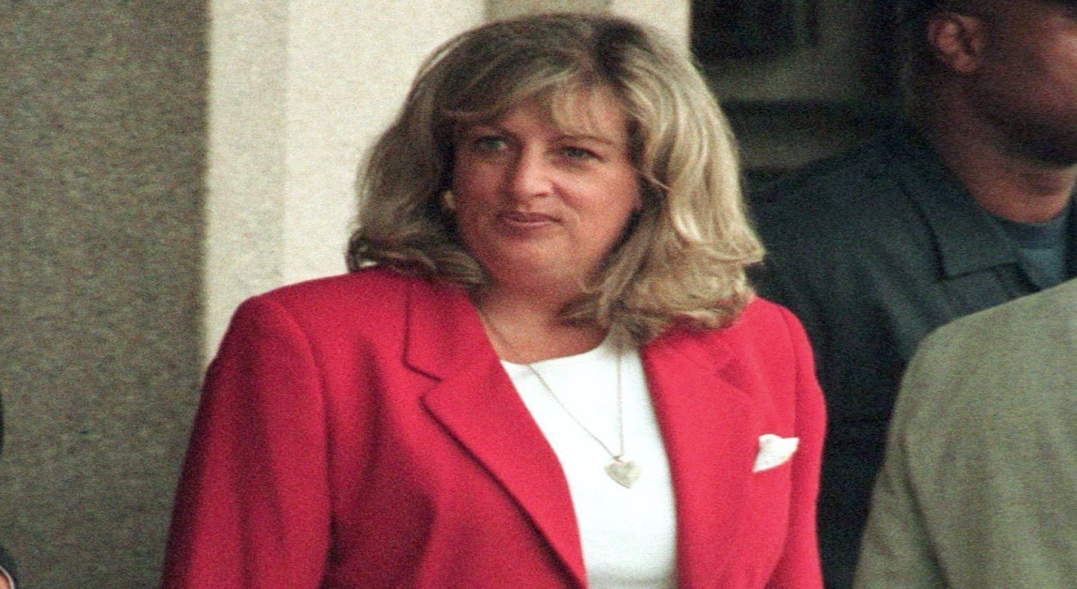
In 1996, the television show Unsolved Mysteries assembled a collection of handwriting experts—including Reginald Alton of Oxford University and Ronald Rice, an 18-year veteran of document examination with the Massachusetts Attorney General’s office and Vincent Scalice—who concluded that the suicide note was a forgery.
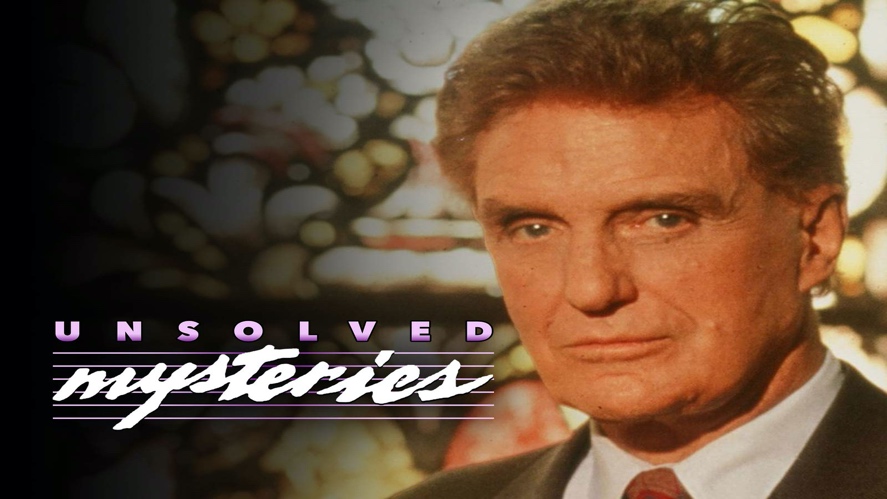
The writing style did not have the characteristic ornamental swags found in Foster’s writing and wrote certain letters differently. The writer further arched his letters, wrote a huge number of hesitation dots—indicating the note was painstakingly copied—and could not replicate Foster’s elegant writing style.
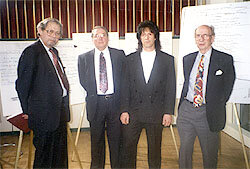

Bill’s Lies
President Clinton—whose backyard was connected with Foster’s when Clinton lived in Hope, Arkansas—was publicly informed of Foster’s death during a taping of the Larry King show around 9:15 p.m. Clinton on air appeared surprised and saddened.
Later, however, a female makeup artist working for CNN came forward to say that she had prepared the president for his appearance on Larry King’s show that night in the White House map room, and that, while she was doing so, an unidentified male whom she presumed to be an aide, notified Clinton that a note or document had been found in Foster’s office.
The president clearly acknowledged the remark, which is significant because it meant that Clinton’s shock at hearing the news on the Larry King show was phony—he already knew.[25]
Furthermore, it meant he was aware of efforts to search Foster’s office for potentially incriminating documents.
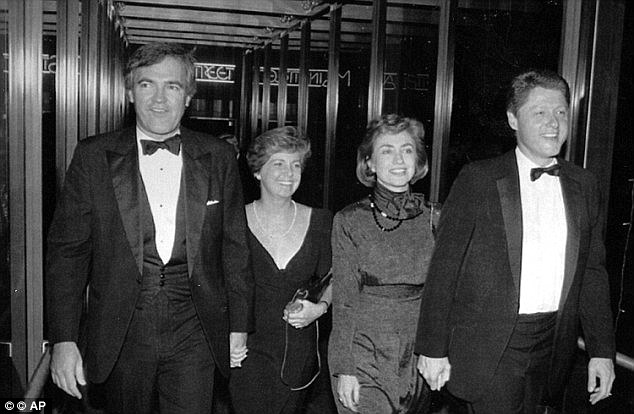
Twenty-four hours after Foster’s death, Bill gave a stirring eulogy for his friend at his funeral.
At the end of his speech, he stated “no one can ever know why this happened.” But the police investigation had only just commenced and offered hope of determining precisely what happened and why if it were carried out thoroughly.
Linda Tripp was among those who recognized that the comments were accurate in the sense that the White House would ensure we would never know why Foster died.
She said that the funeral was entirely plastic and that the tears of the Clintons were for the cameras and made her sick.
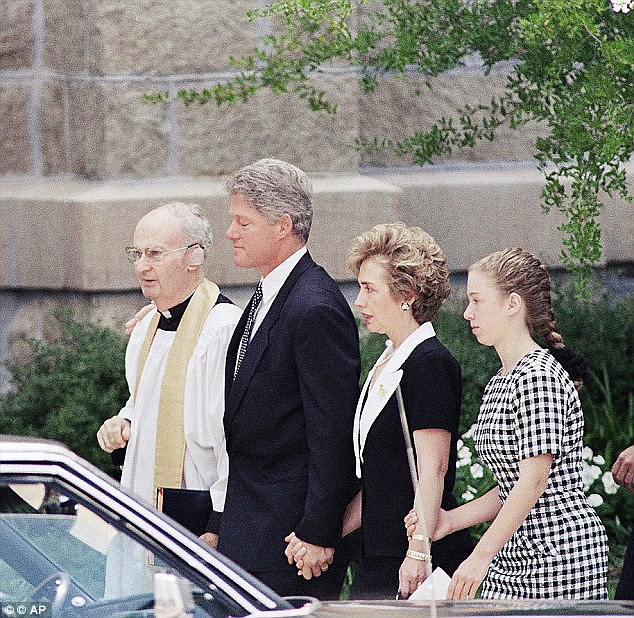
Hillary’s Lies
Hillary and Vince were onetime lovers and had worked closely together at the Rose Law Firm in Little Rock. Hillary said under oath that a month before Foster’s death, she spoke to him only one time, casually over the phone. But a staffer testified that Hillary was in Foster’s office four times.[26]
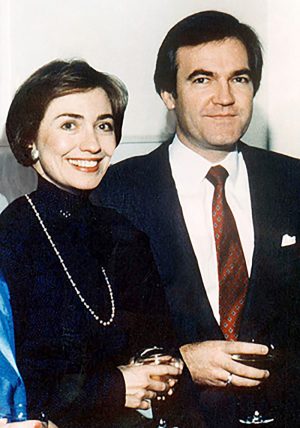
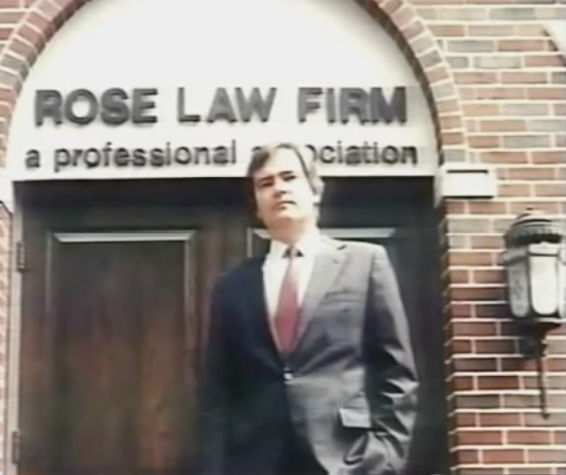
White House Staff Coverup
At 10:42 p.m. on the night of Foster’s death, Secret Service officer Henry P. O’Neill deactivated the counsel office alarm to allow the cleaning crew to enter.
When he entered the counsel suite, he saw a light in Foster’s office, and heard some noise and then saw a woman, apparently Patsy Thomasson, a White House aide who had once served as the secretary of Dan Lasater—a Clinton donor in Arkansas who served jail time for cocaine distribution—behind Foster’s desk rifling through papers and files.

O’Neill did not question the woman, whom he did not know, because he assumed it was Mrs. Foster looking for a suicide note.
After spotting Thomasson, O’Neill stationed himself in the hallway outside the counsel’s suite.
It was there, he testified under oath, that he saw Maggie Williams, an assistant to both President Clinton and the First Lady, walk out of the suite and turn to the right in the direction where he was standing. She was carrying what he described as folders.
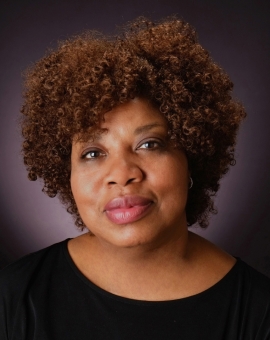
Another aide then passed and said that that was Maggie Williams. O’Neill then observed Williams brace the folders against a cabinet with her body as she unlocked the door to her office. Seconds later, he saw her leave her office carrying nothing.
In her own testimony, Williams acknowledged entering Foster’s office, but only in a vain hope of somehow finding him alive. She claimed she only sat on the sofa—like Nussbaum and Thomasson. She said she did not touch or remove anything from the office.
Later Williams passed a polygraph but only after taking four practice examinations, according to the Senate Banking Committee, which suggests she found a method for fooling the polygraph.[27]
Firing of FBI Director and Police Coverup
On Monday, July 19, President Clinton ordered FBI Director William S. Sessions to vacate his office immediately. According to Sessions, the Justice Department and the White House had been trying to wrest political control over the bureau, which he doggedly resisted. This interference led him to conclude that “the decision about the investigative role of the FBI in the Foster death was therefore compromised from the beginning.”[28]
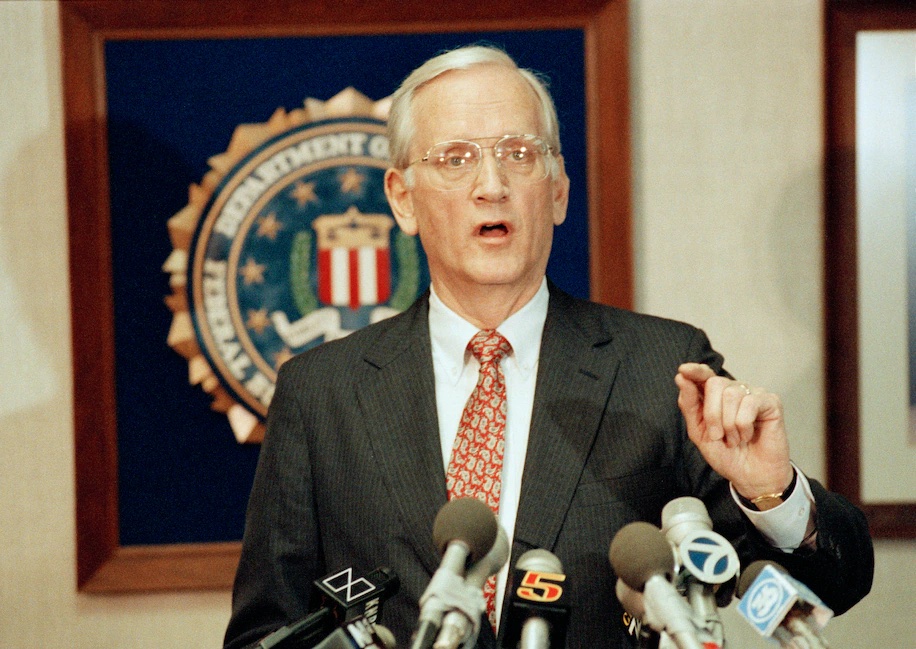
Sessions said his longtime nemesis at the bureau, Floyd Clarke, was acting director on the day of Foster’s death, and remained so until Louis Freeh’s confirmation. Clarke—who was allied with the Justice Department—was in charge during a critical time of investigation.
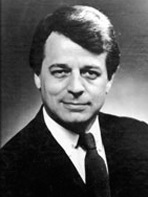
Because of him, Sessions said, the U.S. Park Police were officially given sole responsibility for investigating Foster’s death—though the FBI assisted them from the outset.
The sergeant who took control of the scene, Bob Edwards, was unknown to the rest of the U.S. Park Police. The first officer to take photos, Franz Ferstl, said his seven Polaroids were snatched by a superior at the body scene; they were never seen again.
Park Police technician Pete Simonello said his entire roll of 35 mm photos was declared “underexposed” by the FBI, though his camera had never failed him before or since.
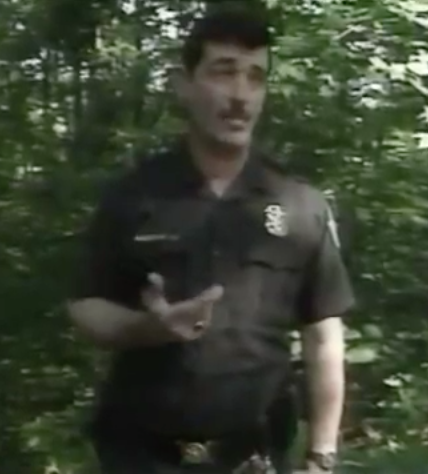
All of this would seem evidence enough to make any reasonable person suspect a coverup. Yet those who voiced such suspicions were and still are smeared as “conspiracy theorists” by Democratic Party officials and mainstream media.
Fake Depression
People who were in contact with Foster on the day of his death said he was acting normal and did not appear depressed. That night he was supposed to take his wife Lisa out on a date and his son said he was in good spirits when he dropped him off at work. Vince’s sister Sharon was supposed to arrive from Little Rock that day with her daughter, and they were going to have lunch in the White House the next day.[29]
Vince’s friend James Lyons was also supposed to meet him in Washington the next day, and six hours before his death, Foster penned a letter to his mother with no hint that this would be their last communication.[30]
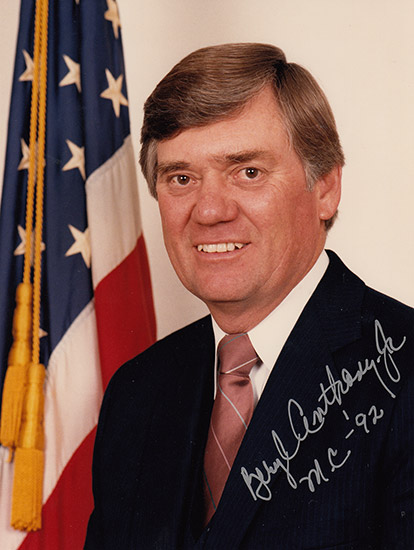
When a reporter contacted his brother-in-law, Beryl Anthony, a former Arkansas congressman, asking him about the allegation that Vince was depressed, Anthony replied “that’s a bunch of crap. There’s not a damn thing to it,” and hung up.[31]
A list of psychiatrists’ names and numbers found on a scrap of paper in Foster’s wallet was used by police authorities as proof of Foster’s alleged depression that led to his suicide.
On Friday afternoon before his death, Foster allegedly called two of the three psychiatrists on the slip of paper. Both calls were placed from the White House and, inexplicably, put on Foster’s calling card, which was not the normal manner in which he made calls.
One of the three psychiatrists, Dr. Robert Hedaya of Chevy Chase, Maryland, said that he received a call before noon on the 16th from Foster’s sister Sheila, who told him her brother was dealing with depression related to highly sensitive and confidential matters, was in need of help and would be calling shortly. Hedaya said he waited by the phone, but Foster never called.[32]
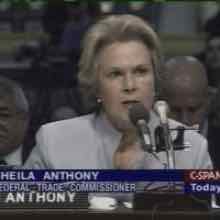

The possibility exists that someone was impersonating Sheila and that the calls were made through Foster’s calling card in order to create a record that would bolster a finding of suicide. Adding to the suspicion is the fact that the phone numbers jotted on the note in Foster’s wallet did not appear to match the way Foster wrote his numbers.
Coverup Continues
After Foster’s death, the White House appointed Kenneth Starr, the U.S. Solicitor General under George H.W. Bush, to carry out an investigation, which determined in October 1997 that Foster’s death was a suicide.
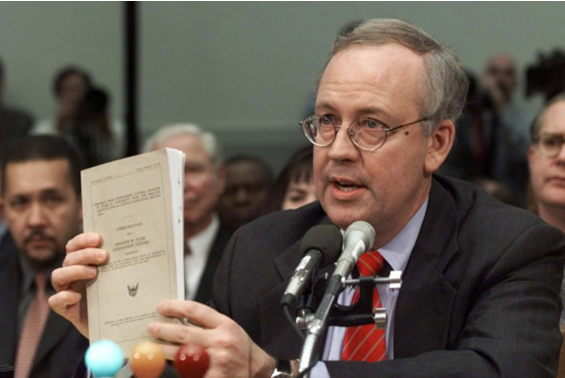
Attorney General Janet Reno also appointed as special prosecutor Robert Fiske, who corroborated the verdict of suicide in a slender 58-page double sided report, which served as little more than a summary of the FBI investigation.
Miguel Rodriguez and Brett Kavanaugh
Starr’s lead investigator, Miguel Rodriguez, resigned on January 17, 1995, because he was being prevented from pursuing tantalizing leads in the case.
Rodriguez, a young federal prosecutor from the Sacramento, California office, wrote a 30-page memo detailing the facts disputing the suicide narrative. These included: a) problems with identifying the gun; b) the lack of a head wound; c) the neck wound identified by first responders; d) men seen in the woods running away from the corpse; e) the lack of fingerprints on the gun that had been wiped clean; and f) lost or ruined photographs.

Rodriguez further noted that: a) four prints on the Honda were never identified; b) four U.S. Park Police officers happened to arrive early on the scene by “coincidence”; c) foliage behind Foster’s body in the pictures differed; d) Fort Marcy Park had private roads and parking lots in the other direction from the corpse; and e) FBI reports did not accurately reflect witness statements.[33]
Rodriguez spent several pages debunking the suicide motive, quoting one of Foster’s best friends, Gordon Rather, who called him the morning of his death and said, “he was the same Vince I’d always known.”
For raising critical questions, Rodriguez said he was forced out; he told Reed Irvine of Accuracy in Media: “they told me, to quote, this is a quote: ‘Back off.’ It was either ‘back off’ or ‘back down.’”
Rodriguez’s replacement was the future Supreme Court Justice Brett Kavanaugh, who ignored many pertinent facts in the case. In grand jury cross-examination, he tried to discredit Patrick Knowlton—a key witness whose observations challenged the suicide verdict—by insinuating that he was a homosexual, cruising the park for gay lovers.[34]
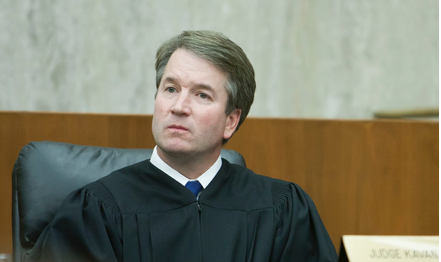
Further Rebuke to Starr
The three-judge panel that appointed Kenneth Starr—David B. Sentelle, John C. Butzner, and Peter T. Fay—appended to the report of the Special Counsel twenty pages of commentary by Patrick Knowlten’s lawyer, John H. Clarke, that completely undermined the conclusion of suicide in Fort Marcy Park. The addendum was included as a rebuke to Starr. Most notably, it specified that Foster could not have driven to the park as the government claimed because Knowlten had observed that Foster’s car was not in the parking lot around the time he was allegedly killed.

Intimidation of Witnesses and Silencing of Jerry Parks
Right before his second interview with the FBI, Patrick Knowlton and his girlfriend Kathy were harassed and his car was smashed with a tire iron. The culprit was identified as Jeffrey Bickett. He worked with the FBI and Pentagon and enjoyed special clearance with the government, higher than top secret.[35]
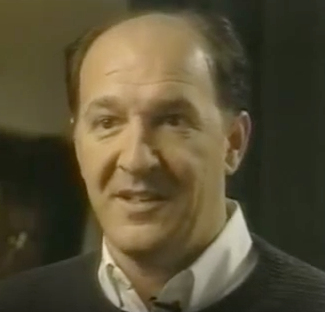
One week after Foster’s death, the home of Jerry L. Parks was burglarized and all his files on the Clintons were stolen. As a security officer for Governor Clinton, Parks had worked closely with Foster. At Hillary’s request the two compiled a dossier on Clinton’s extramarital affairs after Clinton lost the governorship in 1980 and Hillary was contemplating divorce.
Parks also was a friend of Barry Seal—the drug smuggler who flew planes out of Mena, Arkansas—and served as a money runner for illegal arms-drug-running operations to the Nicaraguan Contras (right-wing group supported by the CIA), delivering drug money, according to his wife Jane, directly to Foster, who paid him $10,000 to travel to Mena.[36]
Two months after Foster’s death, Parks was shot dead by an assassin after being stalked while driving home from a restaurant. His son Gary told British reporter Ambrose Evans-Pritchard that he believed “Bill Clinton had my father killed to protect his political career. We’re dealing with a secretive machine here in Arkansas that can shut anyone up in a moment.”[37]
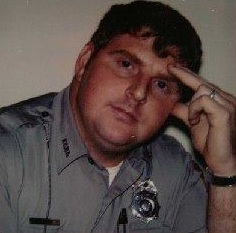
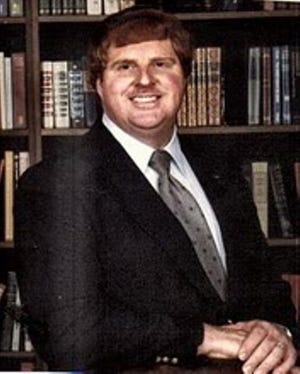
Author Victor Thorn wrote that Parks was killed because “he had the down and dirty on Mena, including huge payoffs, money laundering, how drug money was diverted into Clinton’s campaign coffers, and Vince Foster’s direct involvement. He also knew that Foster and Hillary had been lovers—another bombshell.” After Parks’s death, his house was again ransacked and, according to his widow Jane, there were as many as eight federal agents in her house—flashing FBI, Secret Service, IRS and CIA credentials—and more computer files were seized.[38]
Was the Coroner an FBI Stooge?
The coroner, Dr. James Beyer, a former army pathologist who served two tours in Korea, had indicated in his autopsy report that x-rays were taken of Foster, but then told a Senate Banking Committee that they were not.
Beyer meanwhile moved up the time of his autopsy so that no witnesses at the scene of the body discovery—as is customary—were present. Beyer’s sketch of the body showed a gaping, half-dollar-sized supposed exit wound in the back of Foster’s head. None of the over 20 people who were on the scene that night saw such a wound. Had there been such a wound, the blood, brain matter, and other bodily tissue would have been massive beneath the path of the bullet, but there was none.

In two previous cases, Beyer, was found to have drawn false suicide conclusions. The parents of one of the victims—Tommy Burkett, a DEA informant—said that Beyer—who had worked for the U.S. Army doing 8,000 combat autopsies during the Korean War—was “nothing but a stooge for the FBI.”[39]

Playing Games
The first official witness [known as “CW” for confidential witness], the late Kermit Dale Kyle, first came forward on the radio show of former Watergate felon G. Gordon Liddy. According to researcher David Martin, his story was “baloney” and probably “designed to sow confusion.”
Kyle said that he told a maintenance worker about his discovery of Foster’s body, instead of calling 9/11 himself, because he “wanted to remain anonymous” so “he wouldn’t end up like that guy back there.” However, at that point, Kyle would have had no idea that Foster’s body was that of a big shot. The best way to have remained anonymous would have been to call it in on a pay phone which was located nearby.
Manufacturing Consent
The real circumstances behind Parks’s death were never explored in the mainstream media.
The latter helped coverup Foster’s murder by repeating the government version of events and ignoring revelations that contradicted it—like the findings of the forgery experts and testimony of Patrick Knowlten. Anyone who questioned the suicide story was labeled as a “conspiracy theorist” or “right-wing extremist.”[40]
Among the worst culprits of name calling and blacklisting were liberal high-brow journals like The New Yorker. The latter ran an essay by Sidney Blumenthal, later a senior adviser to Bill, a few weeks after Foster’s death entitled “The Suicide.” It concluded that, “however impulsively, [Foster] had arranged a dramatic death, surrounded by the atmospherics of a Southern cavalier.”
The same week, The Washington Post featured an article entitled “Vince Foster: Out of His Element,” by Walter Pincus, who claimed to have special authority on the topic because he knew Foster over a 30-year period in Little Rock where his wife was from.
Pincus wrote that Foster lacked “a thick hide for the rough and tumble that one develops by participating in a national election campaign or even in a state legislative session.” So since Foster was not cut out for the cutthroat world of Washington politics, he had killed himself—case closed.
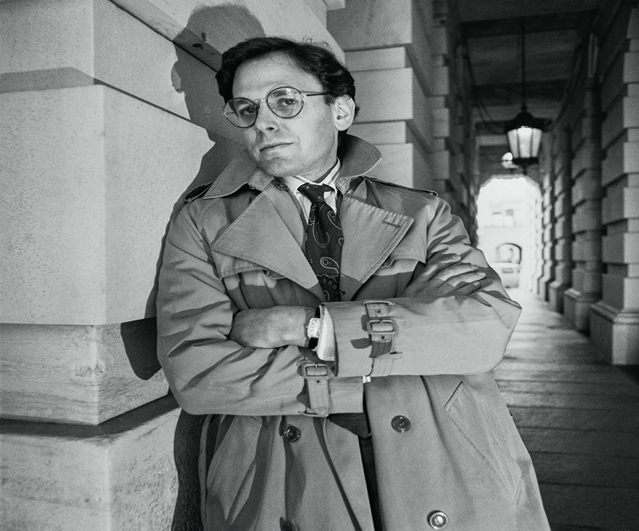
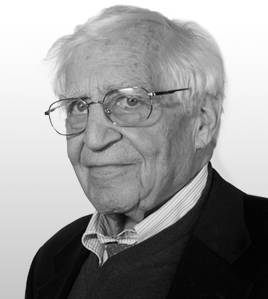
What Did Foster Know and Who May Have Been Behind His Death?
Two nights before his death, Foster had refused an invitation from President Clinton to watch a movie at the White House with the other Arkansans working in the administration—signaling that he was no longer on the team.
Foster had spied on Bill Clinton in the 1980s and made several mysterious trips to Mena, Arkansas, where Clinton allegedly green-lighted covert arms-smuggling missions to the Nicaraguan Contras after which the planes brought back cocaine to the U.S.[41]

Clinton in turn is alleged to have laundered drug money through the Arkansas Development Finance Agency (ADFA) to finance his political campaigns—fleecing Arkansas taxpayers.
One of Foster’s last phone conversations on the morning of his death was with Brantley Branch, the Rose Law Firm partner assigned to investigate Webb Hubbell and Park-O-Meter—a company owned by Hubbell’s father-in-law, Seth Ward, that made weapons parts and guns that were sent to the Contras.[42]
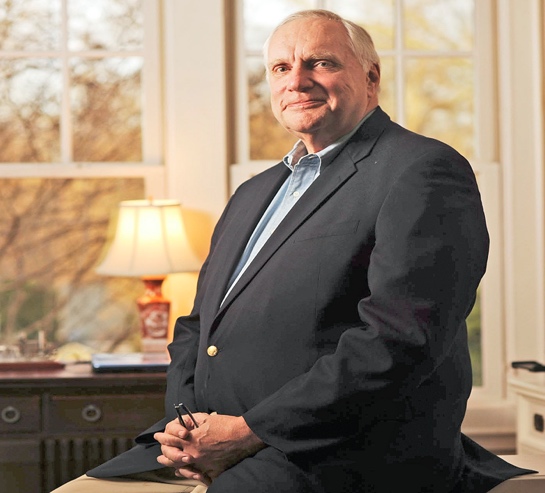
As the Clintons’ personal lawyer, Foster knew more than any living person about the Clintons’ finances and sub rosa campaign financing, tax evasion practices, shady associations,[43] and the Whitewater land deal—the focus of a prolonged legal investigation led by Kenneth Starr.
In the 1970s, the Clintons had invested in 200 acres of land in the Ozarks with James McDougal, an aide to Senator J. William Fulbright. McDougal described himself as “Bill Clinton’s Brutus”—because he claimed that Clinton had stabbed him in the back.[44]
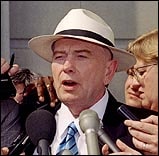
The abuses from the Whitewater land deal included:
- Defrauding of buyers who lost their life savings;
- Bill’s use of the Governor’s office to secure taxpayer funds to build a highway connecting to remote Whitewater lands that increased their value;
- Misreporting of revenues and defrauding the IRS;
- Bill’s pressuring the small loans administration office to make small business loans to get bad loans off Whitewater’s books;
- McDougal channeled money to the Clinton campaign illegally after false expense reporting and secured favors from the Governor’s mansion that increased his profits;
- Clinton secured McDougal’s appointment as president of a savings and loan bank, Madison Guaranty, which engaged in fraudulent banking practices while transferring money to Clinton for his political campaigns—some illegally from depositor’s funds;
- Hillary purchased a home on Whitewater land for below market value and then kept the profits for herself when it was sold—even though Whitewater footed most of the bill for building the house.[45]

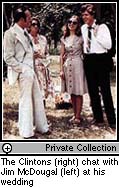
On the day after Foster’s death, a federal judge signed a search warrant for the Little Rock offices of David Hale,[46] the owner of an Arkansas finance company who later testified at James McDougal’s trial that he and McDougal met with then-Arkansas Governor Clinton and discussed Hale providing a fraudulent government-backed loan to Susan McDougal, James’s then-wife with whom Bill had an affair.
Part of that money ultimately benefited the Whitewater Development Corporation and was given as a campaign donation to Bill.
When Clinton staffers raided Foster’s office on the night of his death, Whitewater documents of a probably incriminating nature were removed by Clinton staffers.
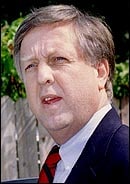

While a partner at the Rose Law Firm, Foster handled the account of Jackson Stephens, owner of the largest bond firm outside of Wall Street in Little Rock and a key Clinton donor, who was instrumental in getting the Bank of Commerce and Credit International (BCCI) involved in banking in the U.S.
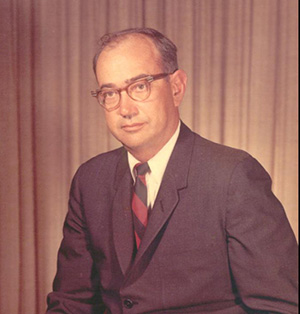
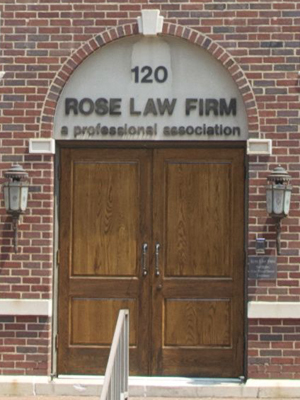
BCCI served as a major laundering front for drug traffickers and other criminal enterprises, including out of Mena and for the CIA. The Rose Law Firm, as its legal arm, was a CIA asset.
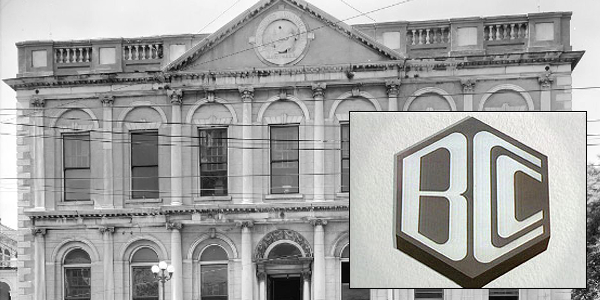
That Foster’s death may have had something to do with protecting the Clintons and men behind BCCI and its criminal operations was evident by whom the White House appointed to investigate Foster’s death: Robert B. Fiske, Jr.—former counsel to Clark Clifford, a Democratic Party grandee who was involved in the takeover of a bank in DC by BCCI.[47]
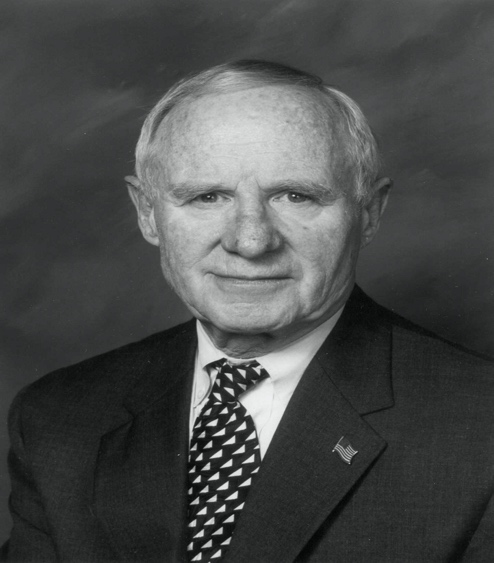
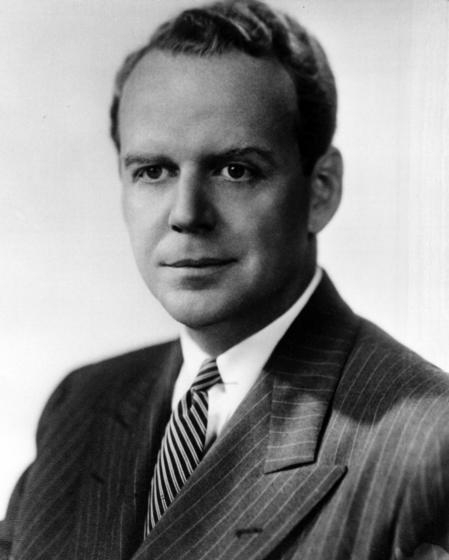
Stephens was an owner of Systematics, a data processing company in Little Rock that came to control PROMIS software of the Inslaw Corporation, which the U.S. government stole in order to beef up its surveillance capability. Hillary handled the company’s legal account with the Rose Law Firm. Systematics managed the covert money flow for BCCI, with which Foster—a liaison to the National Security Agency (NSA)—was involved.[48]

An undercover Customs investigator, Bob Bickel, discovered that Foster helped launder money through offshore bank accounts in the Cayman Islands and elsewhere.
If Foster could no longer be trusted, then a huge web of criminal activity would be exposed—a reason for him to be killed.
Israeli Mossad?
According to author Victor Thorn, who himself later died under suspicious circumstances, Foster at the time of his death was under investigation for espionage, specifically, selling state secrets to Israel.
The Mossad had found out about Foster’s involvement with Mena, Arkansas, drug smuggling, the ADFA, Rose Law Firm, Jackson Stephens, BCCI, the CIA and Systematics and blackmailed him.
The deal was that he would leak codes and secrets to Israel in exchange for the promise that he would not be exposed. The Israelis also promised, allegedly, to add to Foster’s Swiss bank account.
Unfortunately for Foster, the stolen computer software—PROMIS—helped the CIA uncover Foster’s secret deal and the Clintons got wind of it.
When Foster learned this, he panicked and tried to liquidate his Swiss bank account, though the CIA transferred all the money to the Treasury Department.
Foster then arranged a meeting with his Mossad contact who helped orchestrate his killing. The Israelis did not want another spy scandal on the level of Jonathan Pollard (an American jailed for spying for Israel) and wanted to keep secret its ties to major scandals in U.S. politics like the “October Surprise” and Iran-Contra affair.
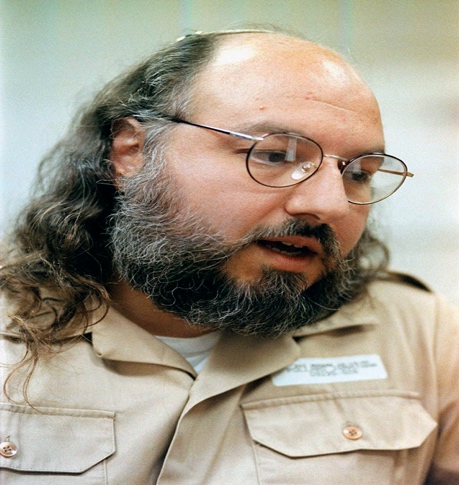
When the Clintons got word of Foster’s death, Hillary had her team break into Foster’s office to remove all potentially incriminating documents.
According to Thorn, Clinton was not responsible for Foster’s death—only its coverup. The Clintons had an opportunity to kill Foster at a weekend retreat in Maryland before his death, which they did not take. If they had killed him, Hillary would have had all the documents from his office removed beforehand—not afterwards—she was taken by surprise.[49]
Waco
David Martin speculates that Foster could have been murdered because he may have uncovered a pedophilia ring in Washington with close links to the Clinton’s that certain documents leaked by Wikileaks allegedly hinted at. Another theory holds that Foster was about to blow the whistle on the U.S. government’s April 1993 raid on the Branch Davidian compound in Waco, Texas, which killed 85 people, many of them innocent children.
The Clinton administration had claimed falsely that the Davidians died from mass suicide and that the raid was necessary to seize stockpiled weapons—which had been accumulated legally under the Second Amendment—seize an amphetamines lab, and to protect sexually abused children—though evidence of this was not clear.
A further pretext was the alleged killing of three Bureau of Alcohol, Tobacco and Firearms (ATF) agents by the Davidians in February 1993, though video footage—presented in the documentary Waco: The Big Lie—suggests that they were killed in a friendly fire incident by another ATF agent who threw a grenade in the building and fired his weapon at them.
The three ATF agents had been on Clinton’s security detail—and possibly were silenced.[50]
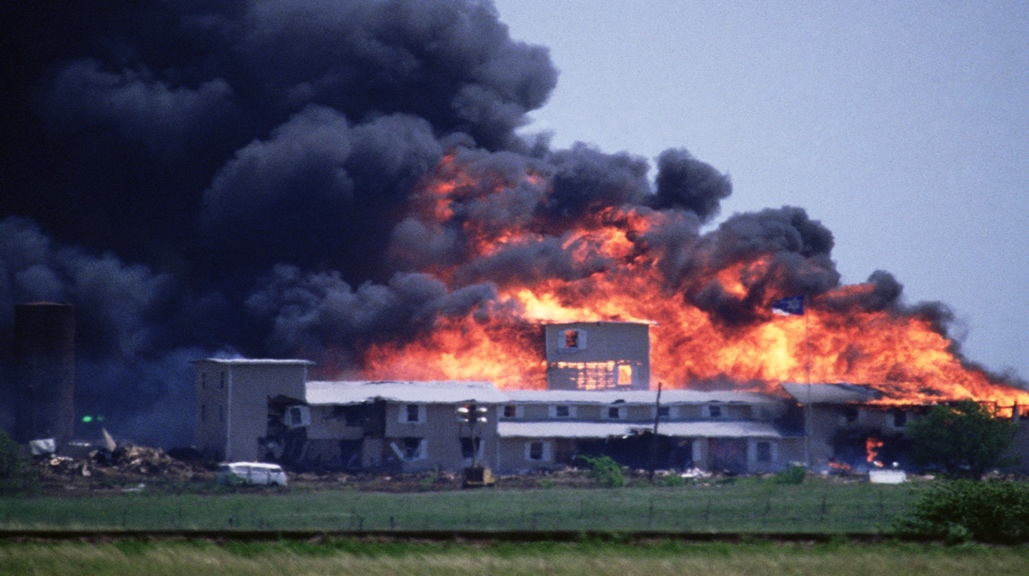
Foster’s wife, Lisa, said that Vince had been horrified when the Branch Davidian complex burned. His assistant testified that he was working on a letter about Waco the day of his death, though the document has never surfaced. Linda Tripp suggested to Larry King that Foster is the one who transmitted the order to raid the Waco compound at Hillary Clinton’s request.
Foster’s secretary, Deborah Gorham, said he kept a locked file cabinet in his office that was off-limits to everyone which had files on the Waco invasion and that she had once been asked to place two folders from the NSA in a safe in Bernard Nussbaum’s office.
Inside the folders were two large envelopes. One had Janet Reno’s name on it—the attorney general who approved the ATF raid that used CS gas, a weapon banned under the Paris Convention. The other envelope had the name of William Kennedy, Foster’s mentor at the Rose Law Firm.[51]
According to Victor Thorn, all of Foster’s Waco files ended up in Hillary’s possession after his death, so we will never know exactly what was in them.[52]
Vince Foster and Seth Rich
Americans have always liked to believe that state-sponsored assassinations are associated with foreign, totalitarian governments like Russia’s.
And they continue to believe it—despite numerous revelations indicating that state-sponsored murders have long been business-as-usual for U.S. governments of both parties—including but not limited to the assassinations of Iranian General Qasem Soleimani by order of Donald Trump; Congolese Prime Minister Patrice Lumumba by order of Dwight Eisenhower; Dominican Republic President Rafael Trujillo and South Vietnam President Ngo Dinh Diem by order of John F. Kennedy; and numerous drone assassinations by order of Barack Obama, including those of U.S. citizens Anwar al-Awlaki, Samir Khan, and 16-year-old Abdulrahman al-Awlaki.
Years later almost to the day of Foster’s death—Seth Rich, a young staffer for the Democratic National Committee, was murdered on a Washington, D.C., street while returning home from a bar.
Supposedly, Rich was killed in a botched robbery, though he was shot twice in the back, and nothing was stolen from him.
Rich is alleged by some to be the staffer who leaked the emails exposing Democratic National Committee machinations to undermine Bernie Sanders during the 2016 primaries and ensure the nomination of Hillary Clinton.
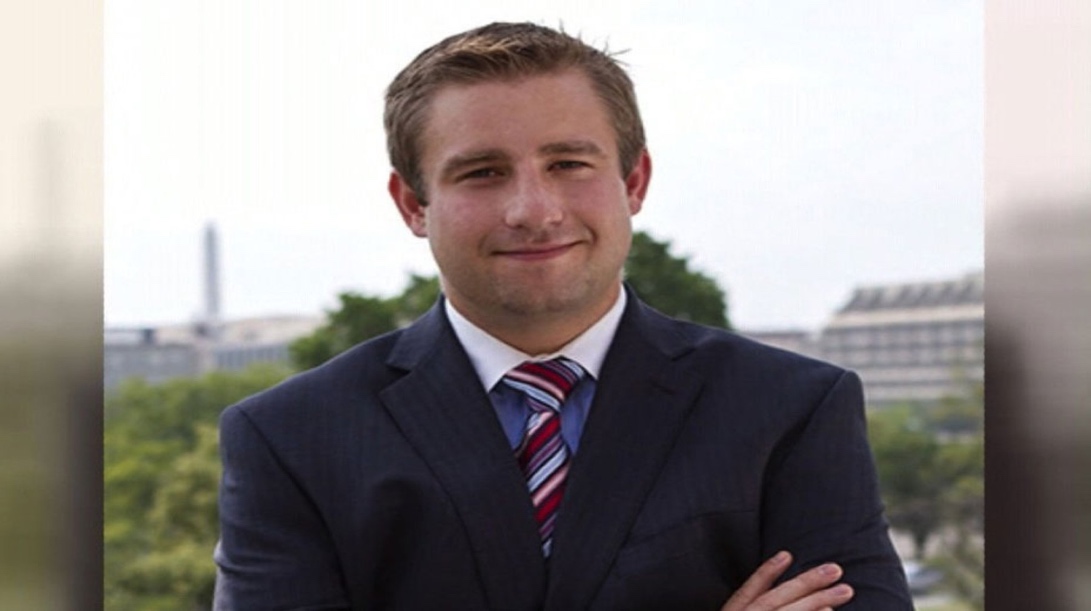
His case resembled Foster’s in that the media quickly “confirmed” the botched-robbery story and vilified anyone who suggested the possibility of murder.
What both cases expose is a culture of violent corruption and impunity in Washington that is enabled by a controlled press antithetical to a functioning democracy.

- Christopher Ruddy, The Strange Death of Vincent Foster: An Investigation (New York: Free Press, 1997), 63. ↑
- Ruddy, The Strange Death of Vincent Foster, 55, 56. ↑
- Ruddy, The Strange Death of Vincent Foster, 48, 51. See also Ambrose Evans-Pritchard, The Secret Life of Bill Clinton: The Unreported Stories (Washington, D.C. Regnery Publishing, 1997); David Martin, The Murder of Vince Foster: America’s Would-Be-Dreyfus Affair (Chantilly, Virginia: DCD Publishers, 2020),.. ↑
- Ruddy, The Strange Death of Vincent Foster, 48, 51
- Ruddy, The Strange Death of Vincent Foster, 74. ↑
- Dan E. Moldea, A Washington Tragedy: How the Death of Vincent Foster Ignited a Political Firestorm (Washington, D.C.: Regnery Publishing Inc., 1998), 3.. ↑
- Martin, The Murder of Vince Foster, 257. ↑
- Martin, The Murder of Vince Foster, 285.
- Ruddy, The Strange Death of Vincent Foster; Martin, The Murder of Vince Foster, 122, 123, 129. ↑
- Ruddy, The Strange Death of Vincent Foster. ↑
- Ruddy, The Strange Death of Vincent Foster, 166; Evans-Pritchard, The Secret Life of Bill Clinton, 127. ↑
- Moldea, A Washington Tragedy, 4; Ruddy, The Strange Death of Vincent Foster, 166; Martin, The Murder of Vince Foster, 86, 129. ↑
- Moldea, A Washington Tragedy, 4; Ruddy, The Strange Death of Vincent Foster, 166; ↑
- Martin, The Murder of Vince Foster, 122.
- Ruddy, The Strange Death of Vincent Foster, 192. ↑
- Ruddy, The Strange Death of Vincent Foster, 31.
- Ruddy, The Strange Death of Vincent Foster, 33. USA Today Reporter John Hanchette, after roaming around Fort Marcy Park, came upon a site with white plastic gloves of the type used at crime scenes–around the second cannon off the dirt path. He also found splotches of blood there, indicating that this was the real crime scene, not the one shown in the polaroid photos which appeared staged.
- Marinka Peschmann, Following Orders: The Death of Vince Foster, Clinton White House Lawyer (One Rock Ink Publishing, 2012), 112.
- Peschmann, Following Orders, 116, 117. Foster could have been put in the trunk of his or another car from there. ↑↑
- Peschmann, Following Orders, 116, 117.
- Evans-Pritchard, The Secret Life of Bill Clinton, 214. ↑
- Martin, The Murder of Vince Foster, 244. ↑
- Peschmann, Following Orders, 106, 107. ↑
- Peschmann, Following Orders, 106, 107. ↑
- Ruddy, The Strange Death of Vincent Foster, 104.
- Dean W. Arnold, Hillary and Vince: A Story of Love, Coverup and Death (Chattanooga Historical Foundation Digital, 2016), 17.↑
- Ruddy, The Strange Death of Vincent Foster. ↑
- Ruddy, The Strange Death of Vincent Foster, 170.
- Martin, The Murder of Vince Foster, 29. ↑
- Victor Thorn, Hillary (and Bill): The Murder Volume: Part three of the Clinton trilogy (Washington, D.C.: American Free Press, 2008). ↑
- Martin, The Murder of Vince Foster, 7. ↑
- Ruddy, The Strange Death of Vincent Foster, 188. ↑
- Martin, The Murder of Vince Foster, 262, 273-281.
- Martin, The Murder of Vince Foster, 276. Rodriguez said of Kavanaugh afterwards: “There are those who will say and do what they have to, to move up the ladder.” ↑ ↑
- Martin, The Murder of Vince Foster, 123, 124.
- Parks also had files on Roger Clinton’s drug dealing. His wife, Jane, had managed an apartment complex where Roger lived and witnessed Bill and him having drug-fueled sex orgies with underage girls. Thorn, Hillary (and Bill): The Murder Volume; Evans-Pritchard, The Secret Life of Bill Clinton, 233-251.
- See Roger Stone and Robert Morrow, The Clinton’s War on Women (New York: Skyhorse, 2016); Evans-Pritchard, The Secret Life of Bill Clinton, 236; Arnold, Hillary and Vince, 130; Thorn, Hillary (and Bill). Foster called two days before his death telling Parks to hand over the files to him so he could give them to Hillary. Parks resisted, saying that Hilary was capable of doing anything. Foster said she could be trusted. Jane said that, after Foster’s death, Jerry told her “I’m a dead man” because the Clintons were cleaning house. “Jerry got paranoid” at this time, she said. “He believed that Foster had been murdered and he was afraid that he’d be next [which proved to be true].” ↑
- Martin, The Murder of Vince Foster, 110; Thorn, Hillary (and Bill). ↑
- Arnold, Hillary and Vince, 52; Evans-Pritchard, The Secret Life of Bill Clinton, 148. ↑
- Martin, The Murder of Vince Foster. Academics followed the mainstream media in promoting the official narrative about Foster’s “suicide” and denigrating those who questioned the official story. Martin gives as examples Jacob Cohen, a professor of American Studies at Brandeis University, and William Leuchtenburg, a distinguished presidential historian and a past president of the American Historical Association (AHA) who wrote that “The suicide of Vince Foster was clearly the result of depression in a man who had been tried beyond his capabilities in Washington, who himself said that he should never have left a successful career in Little Rock. That did not stop accusations that Clinton had deliberately concocted his murder.” Another example is Patrick J. Maney, a professor of history at Boston College and author of the book, Bill Clinton: New Gilded Age President (University Press of Kansas, 2016), which advances a similar view.
- Martin, The Murder of Vince Foster, 110; Roger Morris, Partners in Power: The Clintons and Their America (Washington, D.C.: Regnery, 2000). ↑
- Ward allegedly had allowed his ranch to be used as a drop zone for drug deliveries by Barry Seal. ↑
- Foster and Hillary had helped Dan Lasater, a top Clinton donor in Arkansas, to escape criminal charges for involvement in S&L fraud. Lasater was a large-scale cocaine trafficker reputed to be connected to the Dixie mafia which employed Clinton’s brother Roger. ↑
- Described as a “country boy charmer with a sharp mind,” McDougal had taken Clinton under his wing when both worked for Fulbright and served as his political fundraiser, banker, and senior aide during his first gubernatorial term before ultimately being stabbed in the back. See James McDougal, Arkansas Mischief: The Birth of a National Scandal (New York: Henry Holt & Company, 1998) ↑
- See Martin L. Gross, The Great Whitewater Fiasco (New York: Ballantine Books, 1994); McDougal, Arkansas Mischief; George Carpozi Jr., Clinton Confidential—The Climb to Power: The Unauthorized Biography of Bill and Hillary Clinton (Emery Dalton Books, 1995), 460, 461; Jeff Gerth, “The 1992 Campaign: Personal Finances; Clinton Joined S & L Operator in an Ozark Real Estate Venture,” The New York Times, March 8, 1992; James B. Stewart, Blood Sport: The President and His Adversaries (New York: Simon & Schuster, 1997), 197; Morris, Partners in Power. ↑
- Moldea, A Washington Tragedy, 141. ↑
- Martin, The Murder of Vince Foster, 36. ↑
- Martin, The Murder of Vince Foster; Thorn, Hillary (and Bill): The Murder Volume. ↑
- Thorn, Hillary (and Bill): The Murder Volume. See also Kenn Thomas and Jim Keith, The Octopus: Secret Government and the Death of Danny Casolaro (LA: Feral House, 2004), 136.↑
- See “Waco: A New Revelation,” https://www.documentarytube.com/videos/waco-a-new-revelation; Waco: The Big Lie; Thorn, Hillary (and Bill): The Murder Volume, 35. Another documentary showed sniper fire and tanks firing incendiary devices into the Waco compound. Thorn suggests that David Koresh was a CIA asset involved in illegal arms smuggling and had knowledge of the Mena, Arkansas, arms-trafficking operation to the Nicaraguan Contras. This was covered up by demonizing Koresh as a child abuser and by the destruction of the Branch Davidian compound during the raid. ↑
- Arnold, Hillary and Vince, 118, 119; Thorn, Hillary (and Bill): The Murder Volume, 34, 35. ↑
- Thorn, Hillary (and Bill): The Murder Volume, 34, 35.
CovertAction Magazine is made possible by subscriptions, orders and donations from readers like you.
Blow the Whistle on U.S. Imperialism
Click the whistle and donate
When you donate to CovertAction Magazine, you are supporting investigative journalism. Your contributions go directly to supporting the development, production, editing, and dissemination of the Magazine.
CovertAction Magazine does not receive corporate or government sponsorship. Yet, we hold a steadfast commitment to providing compensation for writers, editorial and technical support. Your support helps facilitate this compensation as well as increase the caliber of this work.
Please make a donation by clicking on the donate logo above and enter the amount and your credit or debit card information.
CovertAction Institute, Inc. (CAI) is a 501(c)(3) non-profit organization and your gift is tax-deductible for federal income purposes. CAI’s tax-exempt ID number is 87-2461683.
We sincerely thank you for your support.
Disclaimer: The contents of this article are the sole responsibility of the author(s). CovertAction Institute, Inc. (CAI), including its Board of Directors (BD), Editorial Board (EB), Advisory Board (AB), staff, volunteers and its projects (including CovertAction Magazine) are not responsible for any inaccurate or incorrect statement in this article. This article also does not necessarily represent the views the BD, the EB, the AB, staff, volunteers, or any members of its projects.
Differing viewpoints: CAM publishes articles with differing viewpoints in an effort to nurture vibrant debate and thoughtful critical analysis. Feel free to comment on the articles in the comment section and/or send your letters to the Editors, which we will publish in the Letters column.
Copyrighted Material: This web site may contain copyrighted material the use of which has not always been specifically authorized by the copyright owner. As a not-for-profit charitable organization incorporated in the State of New York, we are making such material available in an effort to advance the understanding of humanity’s problems and hopefully to help find solutions for those problems. We believe this constitutes a ‘fair use’ of any such copyrighted material as provided for in section 107 of the US Copyright Law. You can read more about ‘fair use’ and US Copyright Law at the Legal Information Institute of Cornell Law School.
Republishing: CovertAction Magazine (CAM) grants permission to cross-post CAM articles on not-for-profit community internet sites as long as the source is acknowledged together with a hyperlink to the original CovertAction Magazine article. Also, kindly let us know at info@CovertActionMagazine.com. For publication of CAM articles in print or other forms including commercial internet sites, contact: info@CovertActionMagazine.com.
By using this site, you agree to these terms above.
About the Author

Jeremy Kuzmarov holds a Ph.D. in American history from Brandeis University and has taught at numerous colleges across the United States. He is regularly sought out as an expert on U.S. history and politics for radio and TV programs and co-hosts a radio show on New York Public Radio and on Progressive Radio News Network called “Uncontrolled Opposition.”
He is Managing Editor of CovertAction Magazine and is the author of six books on U.S. foreign policy, including Obama’s Unending Wars (Clarity Press, 2019), The Russians Are Coming, Again, with John Marciano (Monthly Review Press, 2018), Warmonger. How Clinton’s Malign Foreign Policy Launched the U.S. Trajectory From Bush II to Biden (Clarity Press, 2023); and with Dan Kovalik, Syria: Anatomy of Regime Change (Baraka Books, 2025).
Besides these books, Kuzmarov has published hundreds of articles and contributed to numerous edited volumes, including one in the prestigious Oxford History of Counterinsurgency .
He can be reached at jkuzmarov2@gmail.com and found on substack here.

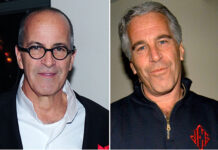
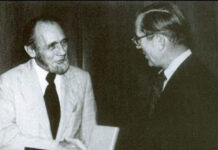
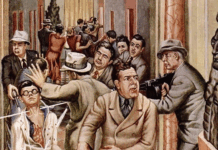

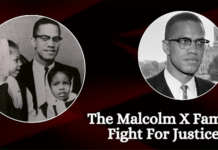
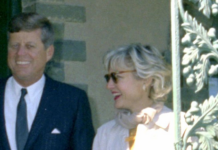
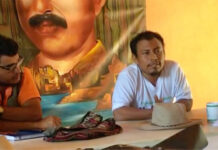
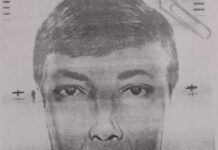
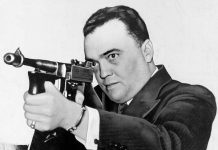

Kavanaugh lied in Starr Report appendix to cover up Foster murder…w had said the FBI was lying about Ultra Air…which shares Omaha, Neb. w/ SAC and the Franklin Scandal….E. Howard Hunt falsified memos implicating JFK in Diem murder…from ‘Secrets’ by Daniel Elsberg
I always wonder if Foster was murdered because he was going to blab about the Arkansas tainted blood scandal. Foster was involved in the deal involving Arkansas prisoners blood being sold. Then Gov of Arkansas Bill Clinton cooked up this scheme with a company that funded Clintons’ campaigns, called Health Management Associates. The blood was bought from Arkansas prisons, which turned out to be infected with HIV. This tainted blood gave many hemophiliacs in Canada HIV. The story was big in Canada, but mostly ignored by the US media
No one wants to touch the case, if you do you will not be around for very long. I know one of the top crime investigator ever and he told me after looking at the stuff, he would not go there and he was offered $20,000 plus travel
[…] Jeremy KuzmarovCovert Action Magazine […]
[…] Jeremy Kuzmarov Covert Action Magazine […]
[…] With the Clinton Brand Now Discredited, Its High Time to Reopen the Investigation into the Death of … […]
OK, it wasn’t suicide. Foster was shot by a lone, crazed, gunman. Probably a transphobic Iranian white supremacist.
GREAT ARTICLE !!!!!!!!! CONGRATULATIONS AND THANK YOU, JEREMY!!!!!!
[…] Strangely, no one had seen Foster from the moment he had left the West Wing to the time his body was discovered—even though his face had been splashed across the news.[1] […]